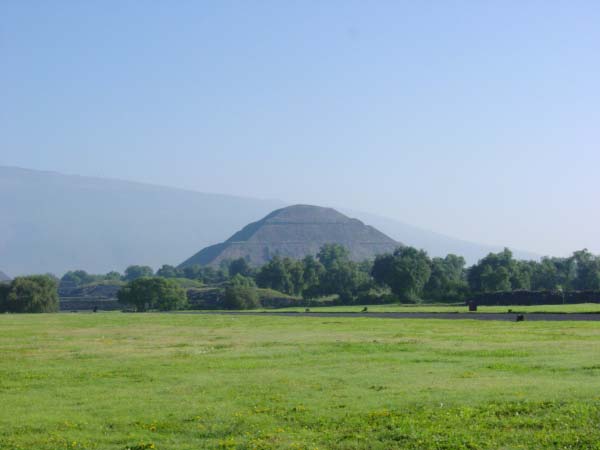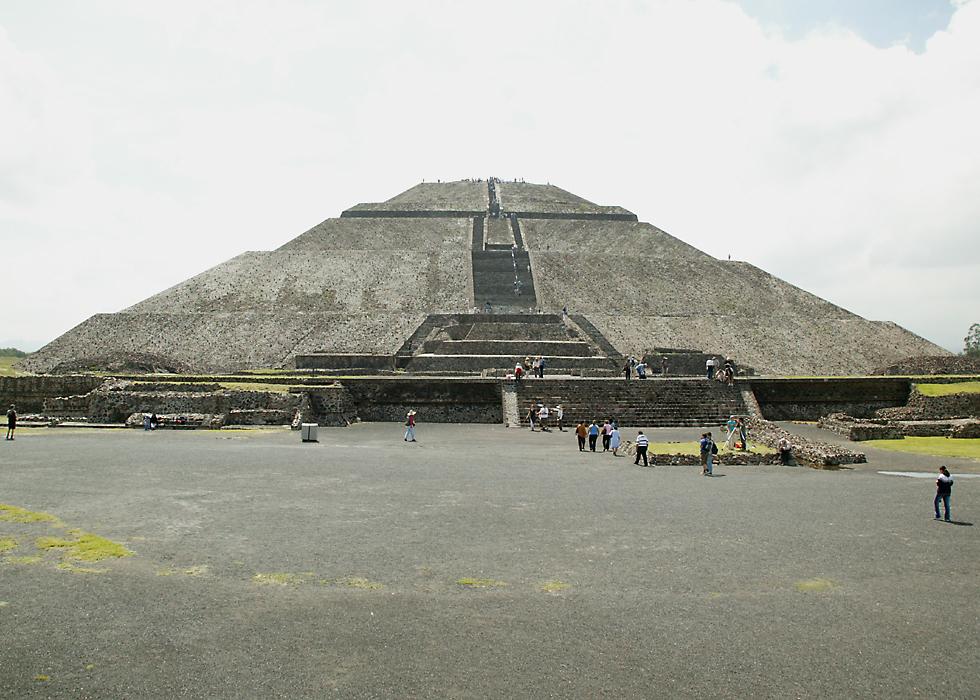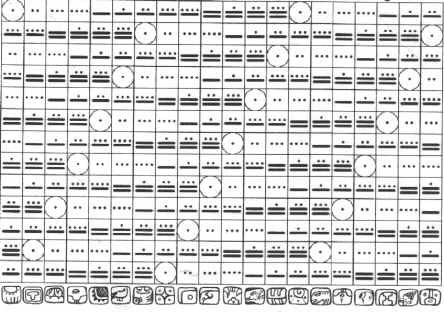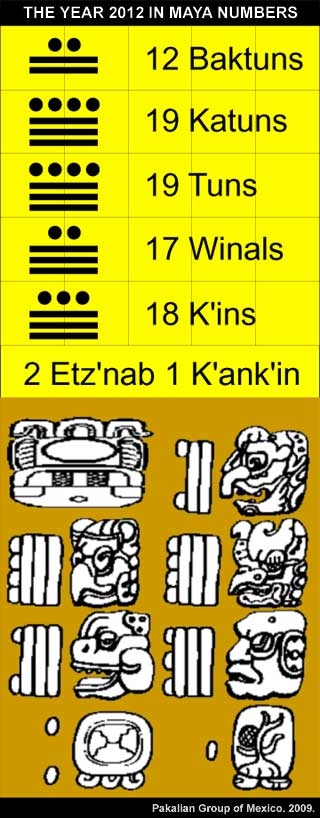Thursday, June 3, 2010
2012 The Pyramid of the Moon The ancient city of Teotihuacan is located 50 kilometers north-east of the center of Mexico city and is well worth at least one or two days of exploration. There are many restored buildings to explore, as well as artwork and artifacts recovered from the site, as well as the two enormous structures for which the city is best known, the Pyramid of the Moon, shown here, and the even larger Pyramid of the Sun. Unlike the pyramids of Egypt, the pyramids at Teotihuacan aren't build of solid stone, instead they consist of stone and brick rubble covered with layers of cut stone, however they're still an extraordinary achievement, especially since all this was done without the benefit of pack animals, metal tools or the wheel Pyramid of the Sun The Pyramid of the Sun, with an estimated weight of three million tons, is much larger than the Pyramid of the Moon, and was also built earlier. Each side is 222 meters long and it's over 70 meters high, making it the third largest pyramid in the world by volume, after the Great Pyramid of Cheops in Egypt and the unrestored pyramid at the Mexican city of Cholula. Unfortunately because of the building method a lot of reconstruction was needed to get it to its current state, and there's considerable uncertainty about its original appearance THE MAYAN CALENDAR DOES NOT END IN 2012 KEEP READING!!! The date December 21st, 2012 A.D. (13.0.0.0.0 in the Long Count), represents an extremely close conjunction of the Winter Solstice Sun with the crossing point of the Galactic Equator (Equator of the Milky Way) and the Ecliptic (path of the Sun), what that ancient Maya recognized as the Sacred Tree. This is an event that has been coming to The Tzolkin is a 260-day calendar based around the period of human gestation. It is composed of 20 day-signs, each of which has 13 variations, and was (and still is) used to determine character traits and time harmonics, in a similar way to Western astrology. The Maya also used a 365-day calendar called the Haab, and a Venus calendar, plus others. They measured long time periods by means of a Long Count, in which one 360-day year (a "Tun"), consists of 18 x 20-day "months" ("Uinals"). Twenty of these Tuns is a Katun; 20 Katuns is a Baktun (nearly 400 years); and 13 Baktuns adds up to a "Great Cycle" of 1,872,000 days, ( 5200 Tuns, or about 5125 years). Mayan scholars have been attempting to correlate the Long Count with our Western Gregorian calendar, since the beginning of this century. There has been massive variation in the suggested correlations, but as early as 1905, Goodman suggested a correlation only 3 days from the most popular one today. Known as the GMT correlation, or "correlation # 584283", this was finalized in 1950, and puts the start of the Great Cycle ( day 0.0.0.0.0) on 11th August 3114 BC, and the end-date (known as 13.0.0.0.0.) as 21st December 2012. Jose Arguelles has pointed out that the Tzolkin is a harmonic of the Great Cycle, and can be used to map history, as if it is measuring not individual gestation but species gestation, since 5 Great Cycles add to exactly 26,000 Tuns; the "Grand Year" or precession of the equinoxes - a higher harmonic of 260. NOTE: The astronomer Philip Plait has stated very clearly that the Mayan calendar does not end in 2012 at all, that it is like the odometer on your car, as each section of the odometer reaches 9 and then clicks over to 0, the next number to it starts a new cycle, so that when all the numbers again reach 0 all the way across the odometer - the last number will change from 1 to 2 and the new cycle starts all over again. FROM: http://pakalahau.wordpress.com/2009/05/29/the-year-2012-in-maya-numbers/
This photo was taken from 2 miles away.
resonance very slowly over thousands and thousands of years. It will come to resolution at exactly 11:11 am GMT.

0 comments:
Post a Comment